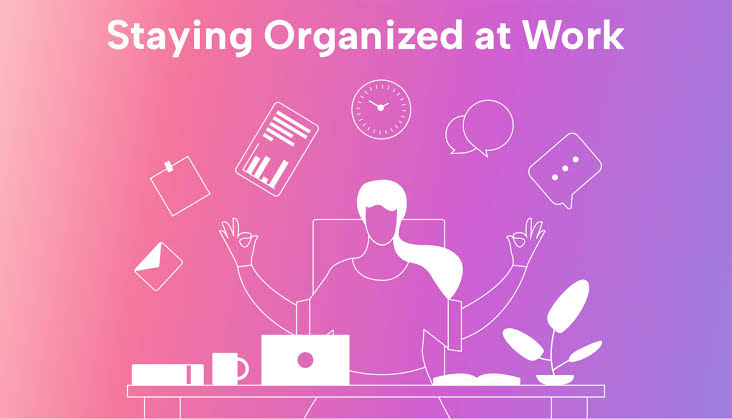In today’s fast-paced work environment, maintaining employee morale and productivity has become more critical than ever. As of July 2025, organizations across the globe are placing a renewed focus on team building—not just as a feel-good exercise, but as a strategic business investment.
Team building is no longer about trust falls or one-off retreats. It has evolved into structured, intentional activities designed to foster communication, collaboration, innovation, and trust among team members. Whether your team is remote, hybrid, or fully in-person, the right activities can significantly enhance both morale and output.
Understanding the Link Between Team Building and Performance
A well-connected team performs better. When employees feel a sense of camaraderie, they communicate more effectively, handle conflict more constructively, and solve problems more creatively.
In 2025, studies have shown that organizations with strong team dynamics report higher employee retention, better customer satisfaction, and increased innovation. This means that team building isn’t just good for culture—it directly contributes to business success.
Morale plays a big part in this equation. Happy, engaged employees are more productive, less likely to burn out, and more loyal to their organizations. Team building activities are a practical way to boost morale and keep workplace energy high.
Icebreaker Games to Build Initial Connections
For new teams or departments with recent hires, icebreakers are a great way to ease social tension and establish rapport. These activities are quick, low-pressure, and help employees learn more about each other on a personal level.
Popular icebreakers in 2025 include “Two Truths and a Lie,” “Would You Rather,” and “Emoji Storytelling,” where team members describe their day using only emojis. These games are especially effective in virtual settings and can be done via video conferencing tools.
Although simple, these games create laughter, familiarity, and openness—setting the tone for deeper team relationships down the line.
Collaborative Problem-Solving Challenges
When teams work together to overcome a challenge, they practice real-world skills like communication, delegation, and strategy. Activities like escape rooms—both physical and virtual—are perfect for this purpose.
Digital platforms in 2025 offer immersive online escape room experiences tailored to corporate teams. Other popular challenges include puzzle hunts, Lego-building competitions, and mock business strategy games.
These tasks require groups to brainstorm, plan, and execute solutions together. Beyond the fun, they highlight the strengths and roles each team member naturally assumes, which can inform more effective team dynamics in the workplace.
Outdoor Retreats and Physical Team Activities
For companies with the ability to bring teams together in person, outdoor team-building events offer powerful mental and physical benefits. Activities like hiking, obstacle courses, scavenger hunts, and sports tournaments create a sense of unity and friendly competition.
In July 2025, many companies are hosting weekend retreats that combine wellness, adventure, and leadership development. These retreats encourage teams to break from routine, unplug from screens, and reconnect with each other in nature.
Such experiences often lead to deeper bonding, improved mood, and increased loyalty toward the organization.
Volunteer Projects That Build Purpose and Camaraderie
Team building doesn’t always have to focus on internal dynamics. Volunteering as a group for a social cause can be a powerful way to align values and build a sense of collective purpose.
Many companies in 2025 are incorporating Corporate Social Responsibility (CSR) into their team-building efforts. Teams might plant trees, organize donation drives, or mentor local students.
Not only does this boost morale by giving employees a sense of contribution beyond work, but it also improves company reputation and fosters a positive, socially conscious culture.
Virtual Team Building for Remote Workforces
With the continued rise of remote and hybrid work models, virtual team building is more important than ever. Keeping dispersed teams connected and engaged requires creativity and consistency.
Popular online activities in 2025 include trivia nights, online cooking classes, virtual game shows, and digital happy hours. Platforms like Gather, Zoom, and Microsoft Teams have integrated new interactive features to support these events.
Breakout room challenges, online storytelling circles, and live polls keep virtual team members involved and engaged, even from afar. The key is to make remote employees feel just as valued and included as in-office colleagues.
Creative Expression and Arts-Based Activities
Encouraging creativity through team-based art projects can unlock hidden talents and build empathy among team members. Activities like painting sessions, music-making, or collaborative storytelling foster out-of-the-box thinking.
In 2025, many organizations are offering “Creativity Labs” where employees engage in guided sessions led by artists or facilitators. These might include building a mural together, composing a team anthem, or developing a short film based on company values.
Such sessions allow teams to express themselves beyond traditional roles, leading to better understanding, reduced stress, and more open communication.
Role-Playing and Scenario-Based Workshops
Role-playing exercises and simulations allow employees to step into each other’s shoes. These activities are particularly effective for developing empathy, leadership, and decision-making skills.
Scenario-based workshops—such as handling customer complaints, managing project crises, or navigating ethical dilemmas—offer a safe environment to practice soft skills. Facilitators provide feedback and encourage reflection, turning these simulations into rich learning experiences.
As of July 2025, many companies use AI-driven platforms that simulate real-life workplace scenarios and provide performance feedback, making these workshops even more impactful and data-driven.
Gamification and Friendly Competitions
Healthy competition, when managed well, can significantly boost team morale and motivation. Gamification—turning tasks or goals into games—makes work more engaging and gives employees a shared sense of achievement.
Companies are using leaderboard systems, digital badges, and rewards to recognize team achievements. Challenges like “Steps Taken in a Week,” “Sales Bingo,” or “Innovation Hackathons” create excitement and focus around key business objectives.
When teams celebrate wins together, even small ones, it reinforces a culture of appreciation and cooperation.
Follow-Up and Reflection to Maximize Impact
After each team-building activity, take time to reflect. What did team members learn? What strengths were revealed? What communication patterns emerged?
In 2025, many organizations use feedback surveys or short group debriefs to evaluate the effectiveness of team-building sessions. Reflection helps transfer lessons from the activity to the workplace and gives employees a sense of closure.
Without follow-up, the value of the activity may fade quickly. Encouraging teams to discuss how the experience applies to their daily tasks ensures long-term benefits in morale and performance.
Conclusion: Building Teams That Thrive
Team building in 2025 is no longer optional or superficial. It’s a strategic tool for building high-performing, happy, and resilient teams. Whether through creative activities, outdoor challenges, or virtual experiences, the right team-building strategy can transform workplace culture.
By investing in meaningful, inclusive, and well-designed activities, organizations can strengthen bonds, boost morale, and increase productivity across the board. When people feel connected, supported, and engaged, they don’t just work—they thrive.




rcnw94
Nice